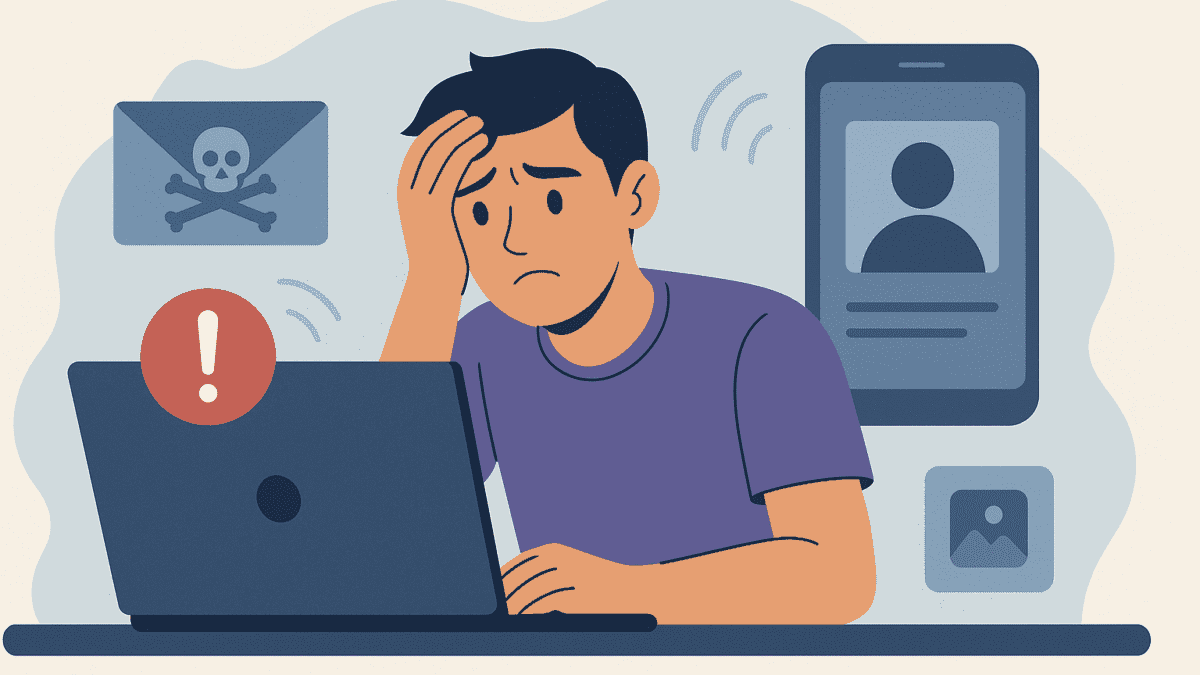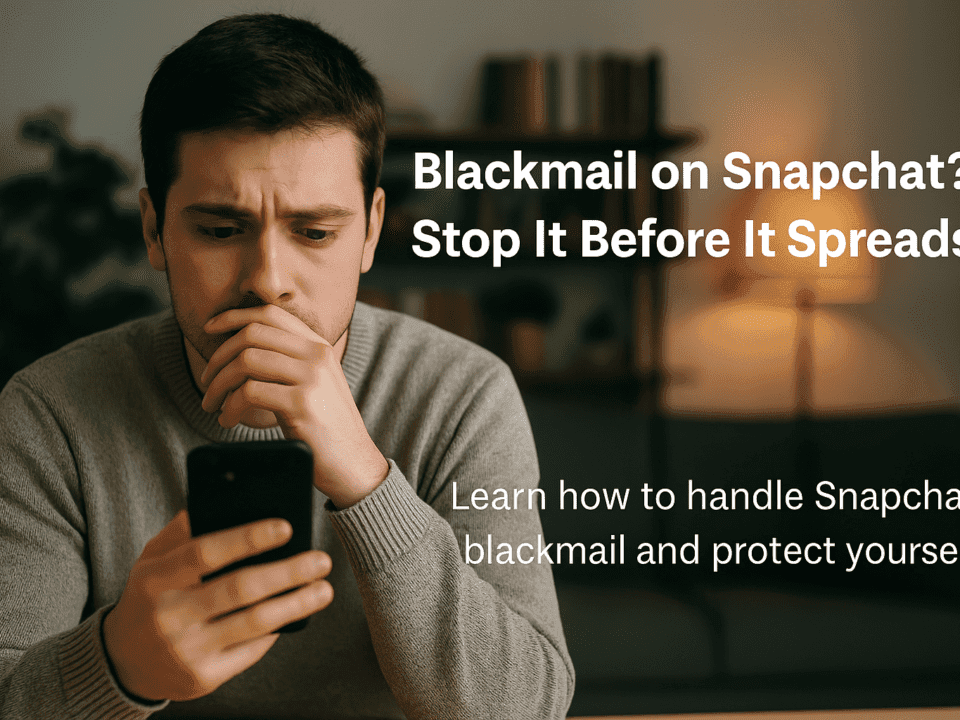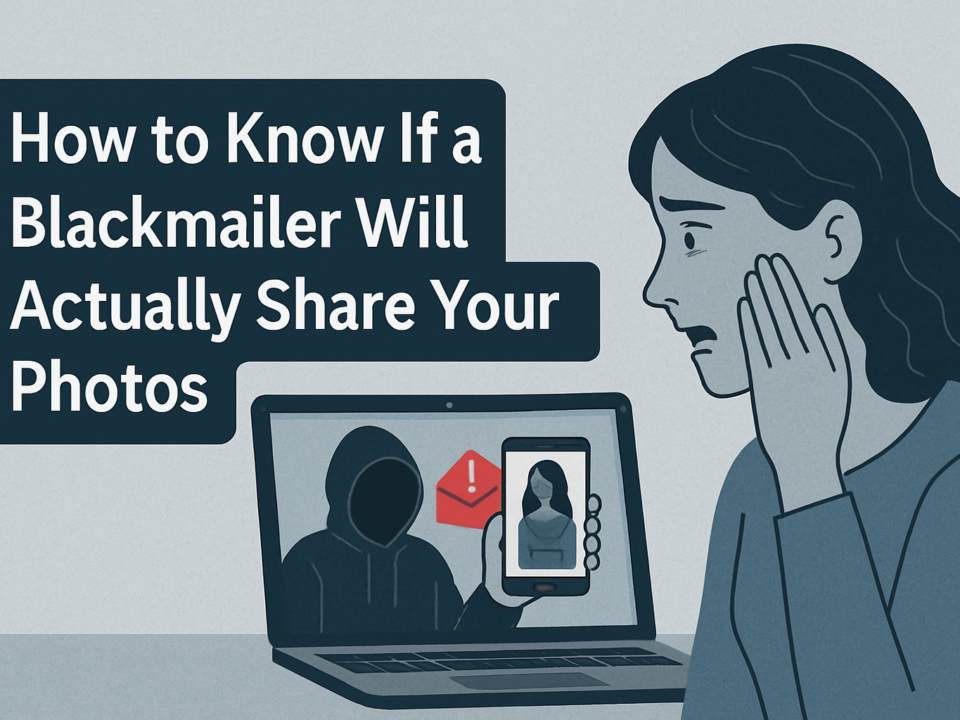
How to Get Rid of Blackmailers (Without Paying a Cent)
June 5, 2025
Real Stories: How Victims Overcame Online Blackmail
June 5, 2025Every Six Minutes, a New Threat Begins
Somewhere right now, another person receives that nightmare message:
“Pay me, or your private photos go public.”
According to global cybercrime reports, cases of online blackmail over private photos have skyrocketed by 390% in just the last two years.
If you’re facing this right now, you’re not an outlier.
You’ve been caught in a system — a deliberate, industrialized scam designed to make you feel trapped.
But the truth is:
You have more power than it feels like right now.
Understanding the playbook scammers use can be the first step to beating them.
Step One: Recognize the Game (Not Just the Threat)
Blackmailers don’t just want your money.
They want your fear — because fear is predictable.
Their method usually looks like this:
Shock: They drop a threat out of nowhere.
Pressure: They set fake deadlines ("30 minutes or else.")
Isolation: They convince you no one else can help you.
Control: They push you into rapid decisions — pay or perish.
Once you see it’s a system, not a personal vendetta, it’s easier to step back.
Step Two: Understand What's Really at Risk
In the panic, it’s easy to assume the worst.
But most scammers:
Mass-message hundreds at once
Don’t have deep access to your contacts
Are bluffing at least 50% of the time about "already sending"
They often bank on you believing they have more power than they actually do.
And the ones who escalate?
They’re rare — but they’re also more reckless when provoked.
That’s why your next move needs to be calculated.
Step Three: Your First Moves (Not Solutions, but Shields)
Without giving full technical steps (because each case differs), the safest patterns from real victims include:
Pause Immediately: Panic decisions = permanent mistakes.
Preserve Evidence: Screenshot everything — every message, profile, username.
Harden Your Accounts: Quietly strengthen your privacy settings — without tipping off the scammer.
Stay Silent: Don’t negotiate, don’t beg, don’t threaten.
Get Strategic Help: Quiet consultation beats emotional overreaction every time.
Why Paying Often Makes Things Worse
You might think:
Maybe a small payment will make them go away.
Here’s why that almost never works:
Once you pay, you're tagged as a source in blackmailer circles.
Demand often doubles or triples the second payment.
You prove you're scared — and scammers feast on fear.
Paying once almost always buys you more pain, not peace.
Why Ignoring Sometimes Works — And Sometimes Backfires
It’s tempting to ghost them.
And sometimes? It works.
But sometimes silence:
Makes scammers panic (thinking you'll expose them)
Triggers small-scale leaks to pressure you
That’s why quiet, informed action — not hot-headed ignoring — is your strongest move.
Blackmailers’ Worst Enemy: Your Calm Strategy
The one thing that disrupts almost every blackmail scam is when a victim doesn’t react as expected.
Instead of panicking or paying:
They document
They lock down
Scammers hate unpredictability. They’re working a volume business — they don't want battles, they want easy money.
You can flip the game by not playing the one they set up.
Final Thought: You’re Still in Control — Even If It Feels Like You’re Not
The goal of blackmail isn’t just exposure — it’s mental collapse.
If you stand firm, shield smartly, and seek trusted help, you turn the tables.
You don't have to "win" a showdown.
You just have to go in the right direction.




